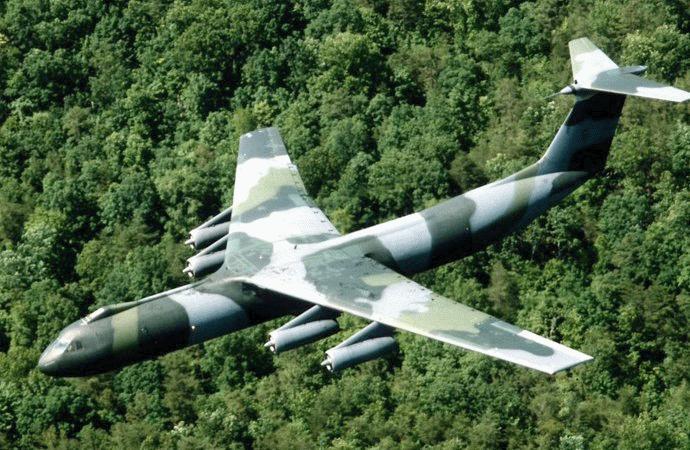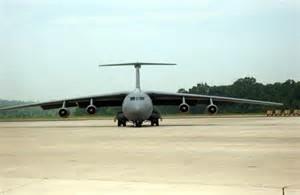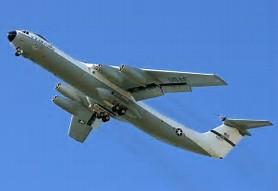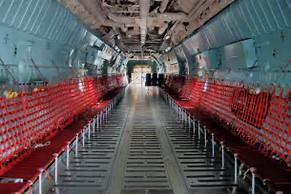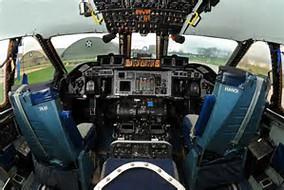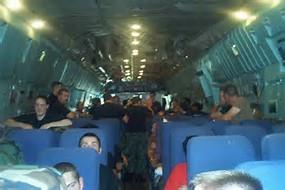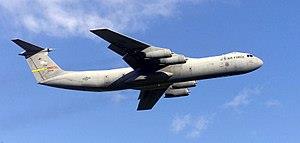S'sonic
Stealth
Menu
A free template by Lucknowwebs.com for WYSIWYG WebBuilder 8
Powered by Sispro1-S
Nigel G Wilcox
Paragon Of Space Publication
© Copyright Reserved - United Kingdom
Ideal Screen Composition 1024 x 768
SITEMAP
PSEUDO SCIENCE
SCIENCE RESEARCH
ABOUT
Desk
Supersonic
Stealth
Study
Menu
MAIN INDEX
Fastest Air Planes
Space
Transport
Menu
http://military.wikia.com/wiki/SEPECAT_Jaguar?file=Cockpit_of_Jaguar_GR.3A.jpg
C-141 Starlifter
General characteristics
Crew: 5-7: 2 pilots, 2 flight engineers, 1 navigator, 1 loadmaster (a second loadmaster routinely used, in later years navigators were only carried on airdrop missions); 5 medical crew (2 nurse, 3 medical technician) on medevac flights
Length: 168 ft 4 in (51.3 m)
Wingspan: 160 ft 0 in (48.8 m)
Height: 39 ft 3 in (12 m)
Wing area: 3,228 ft² (300 m²)
Empty weight: 144,492 lb (65,542 kg)
Max. takeoff weight: 342,100 lb (147,000 kg)
Powerplant: 4 × Pratt & Whitney TF33-P-7 turbofans, 20,250 lbf (90.1 kN each) each
Performance
Maximum speed: 567 mph (493 kn, 912 km/h)
Range: 2,935 mi (2,550 nmi, 4,723 km)
Ferry range: 6,140 mi (5,330 nmi, 9,880 km)
Service ceiling: 41,000 ft (12,500 m)
Rate of climb: 2,600 ft/min (13.2 m/s)
Wing loading: 100.1 lb/ft² (490 kg/m²)
Thrust/weight: 0.25
The Lockheed C-141 Starlifter was a military strategic airlifter that served with the Military Air Transport Service, its successor organization the Military Airlift Command, and finally the Air Mobility Command of the United States Air Force. The aircraft also served with airlift and air mobility wings of the Air Force Reserve, later renamed Air Force Reserve Command, the Air National Guard and, later, one air mobility wing of the Air Education and Training Command dedicated to C-141, C-5, C-17 and KC-135 training.
Maximum speed: 912.50 km/h (567 mph) Maiden flight: 1963 Length: 168.34 ft Wingspan: 160.01 ft Retired: 05 May 2006 Passengers: 205
The Lockheed C-141 Starlifter joined MATS (Military Air Transport Service) in April 1965 and was the replacement for the slower propeller driven C-124 also known as “Old Shaky”. Through the years, the organization that the C-141 was in, changed from MATS to MAC (Military Airlift Command) and finally AMC (Air Mobility Command). The names of the organization may have changed, but the mission remained the same that is provide the U.S. military with strategic airlift.
There were 285 C-141s built from 1965 until 2006 when all of the Starlifters had been retired. The C-17 Globemaster replaced the aging C-141s in the early 2000s.
Development and Design
In the early 60s, the only aircraft MATS had at the time for strategic airlift were various propeller driven aircraft such as C-124, C-133, C-54, C-118, C-46, C-47 and an assortment of “odd ducks”. In 1960 USAF put out a request for a jet-powered transport capable of lifting 60,000 lbs a distance of 3,500 nautical miles. Boeing, Lockheed, and General Dynamics (formerly Convair) responded to the bid. Lockheed’s Model 300, the first jet-powered aircraft that was designed to carry cargo was the winner.
Operational History
On 29 January 1965 the FAA officially certified the C-141 Starlifter and #38088, the first C-141 to go operational was delivered to the 1501st Air Transport Wing at Travis AFB in CA. Soon additional C-141s that were delivered to USAF were employed in operational sorties in the Viet Nam war zone.
Then on 08 January 1966, MAC (Military Airlift Command) was established and MATS was disestablished by the USAF. All C-141s were transferred to MAC. During the years of 1966 through 1972 the COn 29 January 1965 the FAA officially certified the C-141 Starlifter and #38088, the first C-141 to go operational was delivered to the 1501st Air Transport Wing at Travis AFB in CA. Soon additional C-141s that were delivered to USAF were employed in operational sorties in the Viet Nam war zone.
Then on 08 January 1966, MAC (Military Airlift Command) was established and MATS was disestablished by the USAF. All C-141s were transferred to MAC. During the years of 1966 through 1972 the C-141 was a workhorse in the Southeast Asia war theater. Many a G. I. Army, Navy, Marine and Air force will remember their ride across the Pacific in a C-141 during those years. It also played a major roll in Operation Nickel Grass, the Yom Kipper War in 1973.
MAC C-141s played a important role in Operation Desert Shield and later Desert Storm. Between the two combat situations, over 159,000 short tons of cargo and about 94,000 passengers were airlifted to the Middle East in the early 90s.
On 01 June 1992, the Air Force established the Air Mobility Command (AMC and MAC was disestablished). All aircraft and Airlift Wings were transferred to the new command. Through the next 12 years the C-141 Starlifter performed admirably. The last C-141 was retired in 2006.
A little story on the last C-141 #60177. This aircraft was part of several C-141s in 1973 to evacuate POWs interned in Hanoi during the war. It made a series of flights to Hanoi and was thus nicknamed “Hanoi Taxi”. It was active during 2005-2006 primarily for publicity and free rides for former POWs that wanted to salute the “old girl” before retirement.
-141 was a workhorse in the Southeast Asia war theater. Many a G. I. Army, Navy, Marine and Air force will remember their ride across the Pacific in a C-141 during those years. It also played a major roll in Operation Nickel Grass, the Yom Kipper War in 1973.
MAC C-141s played a important role in Operation Desert Shield and later Desert Storm. Between the two combat situations, over 159,000 short tons of cargo and about 94,000 passengers were airlifted to the Middle East in the early 90s.
On 01 June 1992, the Air Force established the Air Mobility Command (AMC and MAC was disestablished). All aircraft and Airlift Wings were transferred to the new command. Through the next 12 years the C-141 Starlifter performed admirably. The last C-141 was retired in 2006.
A little story on the last C-141 #60177. This aircraft was part of several C-141s in 1973 to evacuate POWs interned in Hanoi during the war. It made a series of flights to Hanoi and was thus nicknamed “Hanoi Taxi”. It was active during 2005-2006 primarily for publicity and free rides for former POWs that wanted to salute the “old girl” before retirement.
The bottom of the fuselage was only 50 inches off the ground. This allowed outsize cargo to be easily loaded through the two rear cargo doors. ( the aircraft could be configured to carry a Minuteman missile). The C-141 could also carry 154 passengers (using airline seats) or 123 paratroops and a little over 70,000lbs of cargo (short distances). One of President Kennedy’s first acts in 1961 was to order 5 Model 300 (to be designed C-141 Starlifter) aircraft for tests and evaluation.
In 1963 on 17 December coinciding with Orville and Wilbur Wrights flight of 60 years earlier. Tail #12775 made the inaugural C-141 flight. The Starlifter passed the tests to be certified not only for military standards but civilian standards also. This was the first of 285 C-141 Starlifters to be produced. It is interesting to note that Flight Tigers and Slick Air Freight made provisional orders 4 each of the L-300 Superstar Lifters. The L-300 civilian were to be 37 feet longer then the C-141A. Some other differences were made to appeal to the two air fright lines as well as other freight haulers. However the provisional orders were cancelled by the two air freight companies and Lockheed found no other buyers so the donated the L-300 prototype to NASA.
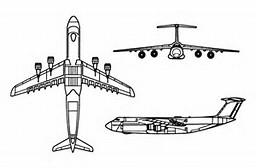
Role: Strategic airlifter
Manufacturer: Lockheed
First flight: 17 December 1963
Introduction: April 1965
Retired: May 2006
Primary users: United States Air Force
NASA
Produced: 1963-1968
Number built: 285



